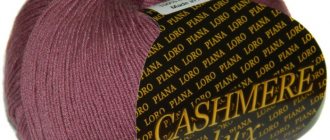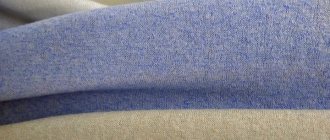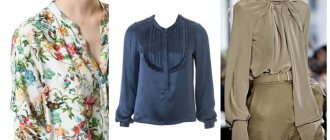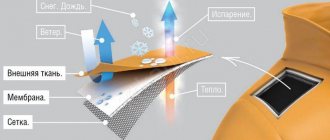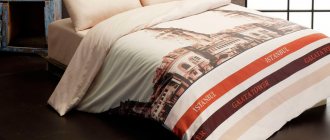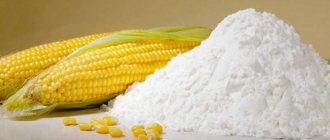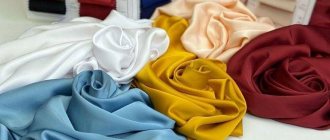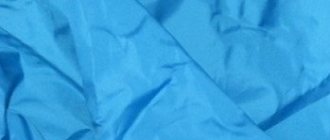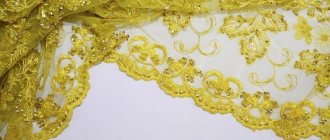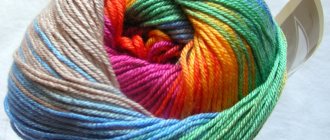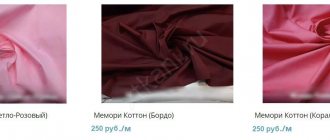Shelter insulation is a new product invented by domestic developers. It has amazing heat-protective qualities, is lightweight, and easy to use. The material has been on the market for only a few years, but has already gained a leading position among insulation materials for special and mass clothing.
Shelter insulation was developed in Russia
A significant part of Russian open spaces is located in areas of harsh climatic conditions in which a large number of people live and work. There is a long overdue need to create production facilities that produce domestic insulating materials for clothing. Imported insulation materials could not always provide comfort in our conditions.
Many people have thought about this problem. The material had to be light, retain heat well, without creating a greenhouse effect. The task was completed by specialists with experience in the manufacture of porous polymer sheets.
The Whole World factory launched the production of the first nonwoven materials at the beginning of this century. At first these were bulk polymer products for upholstered furniture, then for mattresses. The company developed and launched the technology of filter fabrics for ventilation. Porous products provide air exchange in the Cathedral of Christ the Savior, in the halls of the Tretyakov Gallery and the Hermitage. Such product introduction objects speak for themselves.
Insulation operation diagram
The experience gained allowed specialists to cope with the development of polymer insulation for clothing. They called the insulation shelter. Translated from English, the word means “shelter, shelter.” Indeed, a person wearing clothes with shelter insulation feels like in a cozy shelter, protected from cold and bad weather.
The material is made from very thin polyester fibers, the thickness of which is much less than a human hair. The fibers are directed in different directions and fixed to each other at points of contact in a special way. For fixation, a hot air stream is passed through a voluminous fibrous layer of polymer microfilaments. The polymer molecules melt, soften and stick together at the points of contact.
Features of the structure are as follows:
- polymer fibers mutually repel each other, so clumping and sticking of the material is eliminated;
- under external pressure, molecules can be compressed for some time, and after the load disappears they can easily straighten.
1 mm² of insulation contains 168 multidirectional cells. Such high porosity of the material determines its quality.
Cellular structure of the material
- Shelter insulation has a maximum degree of thermal protection with a minimum volume.
- Thanks to the flexibility and elasticity of the fibers, the material is soft and elastic.
- A special method of strong fixation ensures the homogeneity of the material. The threads do not move, the insulation does not get knocked down, and does not form lumps. It can easily take a compact shape when twisted, and then restore it.
- Polymer fibers are durable. The production technology guarantees the unchanged properties of the insulation for a long period of time.
- A huge number of tortuous pores makes the material permeable from the inside to warm air molecules, but impenetrable from the outside. The body “breathes”, but the temperature under clothes does not decrease.
- Many modifications of shelter insulation include silver fibers to eliminate the possibility of the formation of static electricity.
- The material is thoroughly purified from all residual monomers, does not cause allergic reactions, and is absolutely harmless.
The combination of these characteristics has made shelter insulation indispensable in the production of winter clothing for work and everyday wear.
What is Shelter insulation?
What is shelter insulation? This is a new material produced by Russian scientists; it began to be produced at the Ves Mir factory. It appeared in early 2001, and gained great popularity both in our country and abroad.
Appearance of the material
Note! This filler uses high-molecular fiber compounds, which are thousands of times thinner than spider webs. This distinguishes the fabric from classic synthetic down and gives it rare qualities, which are presented below.
History of the origin of the material
Shelter is a Russian brand of insulation made from polyester fibers. The materials were developed by technologists from the Ves Mir factory, taking into account the requirements of the clothing industry.
Initially, specialists created a heat-insulating porous material from polymer fibers for the furniture industry and construction. Later, shelter insulation for sewing clothes appeared.
Reference! Shelter means “shelter” or “shelter” in English. Thus, the developers emphasized the high degree of protection provided by the insulation.
In 2009, the material was successfully tested for use in the extremely harsh conditions of the Arctic and Far North. As tests have shown, shelter insulation for clothing can withstand temperatures from -52 °C and wind gusts of 20-22 m/sec.
Where can I buy
ManufacturerMoscowKazan
Factory of Nonwoven Materials "Whole World" Official website: https://www.wesmir.com/ Tel.,
Shop "Season" on Avtozavodskaya Opening hours: from 10.00 to 21.00 without days off and lunch breaks Store address: Moscow, st. Avtozavodskaya, 9/1 metro station "Avtozavodskaya" Tel
Season store in Kazan Opening hours: from 10.00 to 21.00 Store address: Kazan, st. Yamasheva, 93 (TD "Savinovo"), 3rd floor. Tel. (atelier) (843) 517-07-55
© 2021 textiletrend.ru
Types of insulation for shelter clothing
The technology for the production of insulating sheets is implemented in different versions to expand the range of resulting materials. There are several modifications of polymer insulation on the market.
- Shelter Micro is a premium insulation material for children's and adult outerwear. The material is used in the manufacture of everyday outerwear, sportswear for lovers of extreme activities, and sleeping bags. Products with shelter micro insulation can be used in climate zones with critically low temperatures.
- Shelter Loft is an amazing insulation with the ability to repel water. Used for the production of sleeping bags and sportswear.
- Shelter Fashion - exquisite insulation for exclusive warm clothing allows you to create a range of products with excellent heat-insulating properties.
- Shelter Kids is a cozy insulation for children's clothing, made with a special degree of protection and hygiene.
- Shelter Home – insulation for home mattress covers and blankets. It is intended for moderate temperatures.
- Shelter Profi is a harsh heat-insulating material for people working in extreme conditions.
There are the following types of products in this last group:
- for especially low temperatures;
- for additional protection against electricity;
- for comprehensive protection against static electricity and fire;
- for protection against the action of an electric welding arc.
The density of insulation depends on the purpose. The more severe the conditions of the intended use, the higher the density of the insulation.
How to care for products with shelter insulation
Despite the durability of the material, manufacturers recommend using gentle care conditions for it. The insulation may not undergo changes during normal washing, but to maintain all its protective qualities, it is better to take into account the opinion of the manufacturers.
- Shelter insulation should be washed on a delicate cycle.
- If possible, special cleaning by professionals is quite acceptable.
- The material should not be wrung out in a machine. It is better to hang it up to drain the water and dry it further.
- The insulation tolerates contactless steaming well; there is no need to iron it.
Shelter insulation is reliable and durable. Flexible, lightweight material does not restrict movement. It will protect from wind and cold, create comfort during work, everyday wear and relaxation.
Features and characteristics of Shelter insulation
Shelter is a truly universal type of insulation. It combines the properties of natural fur and synthetic substances. Read about Turkish bamboo towels here.
As a result, even a relatively thin layer of this substance can well protect a person from hypothermia at low ambient temperatures.
Composition: what is the filler made of?
It is a high-tech synthetic material with heat-insulating properties. It is designed using ultra-fine microfibers. This allows for a good level of breathability with increased thermal protection. Read about the elasticated bedspread and bed cover here.
Production takes place from special polyester microfibers. As a result, the material is not able to absorb moisture. It is recommended for use in the production of clothing and some accessories intended primarily in cold climates.
The widespread use of Shelter is due to its properties. They are as follows:
- vapor permeability;
- flexibility and elasticity;
- durability;
- heat preservation;
- light weight;
- safety for human health;
- environmental friendliness.
In accordance with the tests carried out, it was proven that the insulation does not cause allergic reactions in people. Its important feature is the ability to wash in a machine.
It is distinguished by its ability to provide reliable thermal protection. Tests of this material were carried out at temperatures ranging from -23 to -58 degrees Celsius with a humidity of 80% and a wind of 20-22 meters per second. They were organized in 2014, which is part of the Russian Geographical Society. The tests took place as part of the study of the polar ring in the Yamal-Nenets Autonomous Okrug. Read about an orthopedic sleeping pillow in this article.
The results noted the following:
- hydrophobicity;
- low weight;
- comfort of clothing.
Clothing made from Shelter is recognized as meeting the required level of warm comfort. Sleeping bags made from this material received special thanks from the Russian Geographical Society.
Before purchasing a product, you need to pay attention to a number of its important consumer qualities. The main advantages of the substance are as follows:
- Reliable protection against low temperatures. This is due to the use of special microfibers. They do not allow the cold to penetrate, thereby providing good thermal protection.
- Comfort and freedom of action. Due to the fact that the fibers are elastic, the manufacturer has the opportunity to produce clothes that will not restrict a person’s movements.
- Ensuring good heat transfer. Even under very intense loads, the human body in clothes has the ability to breathe.
- Complete security. Studies have shown that it does not cause allergic reactions in humans. In addition, it is environmentally friendly, which is confirmed by relevant certificates.
- Ease of care. Dries very quickly and well. After washing using an automatic machine, it does not shrink.
Like any other heat-insulating substance, it has a number of disadvantages. Among them it is worth highlighting the following:
- High price. It is due to the uniqueness of the material, its production technology and the financial resources invested in research.
- Vapor permeation. In this indicator it is inferior to some organic fibers.
Thus, it has relatively few disadvantages. Its advantages completely compensate for them. That is why this Russian-made material is currently enjoying corresponding popularity.
TechnoNIKOL is a reliable Russian brand
This is an exclusively Russian brand that has 53 factories in 7 countries. Among them are Germany and Great Britain, Italy and Lithuania. Official representative offices are located in 18 countries. The company's training centers are also located there. TechnoNIKOL has its own Research Centers for the development of new technologies for heat and sound insulation. The products of this concern are very popular due to competitive prices and are sold in 95 countries.
TechnoNIKOL general building thermal insulation based on stone wool
An inexpensive way to perform thermal insulation on any construction site is with materials based on stone wool with a universal purpose. At TechnoNIKOL such products are represented by the BAZALIT series. All brands can be mounted horizontally or vertically.
- BAZALIT L-30 - has a density of 25-35 kg/m3 and a thermal conductivity of 0.032 W/(m*K) at an outside temperature of 10 degrees. Well suited for a base layer followed by cover.
- BASALIT L-50 - denser slabs (36-50 kg/m3), designed for installation in any spatial position. Particularly good for the bottom layer when insulating floors and interfloor ceilings.
- BASALIT L-75 is the most dense material based on stone wool with an indicator of 51-75 kg/m3. Vapor permeability of 0.5 mg/(m.h.Pa) allows its use in the middle layer on walls with light masonry.
TechnoNIKOL stone wool for insulation of all types of roofs
For all types of roofing, the TechnoNIKOL company has developed a line of TECHNORUF insulation materials. The TECHNORUF N EXTRA brand is produced in the form of a basalt slab with a density of 90-110 kg/m3 and can withstand pressure up to 3000 kg per 1 m2. It is optimal for arranging a sloping roof. TECHNORUF N PROF is next in class and has a density of 110-130 kg/m3. With a deformation of 10%, it is capable of carrying a load of up to 4000 kg per square meter, which is also not bad for insulating a roof of complex shape.
TECHNORUF V PROF is designed for all types of flat roofs. It has a pronounced hydrophobic effect. It can act as the top durable layer in three-layer structures. Its density is 175-205 kg/m3, and its strength can withstand up to 8000 kg of pressure per m2. To quickly create a slope on a flat roof for precipitation, use TECHNOROOF WEDGE 4.2%, which automatically forms a slope contour. At the same time, cotton wool itself effectively combats cold retention and has a thermal conductivity index of 0.038 W/(m*K).
TechnoNIKOL TECHNORUF N EXTRA.
TechnoNIKOL stone wool for insulation of ventilated facades
For ventilated facades, the manufacturer offers a whole line of basalt wool from the TECHNOVENT series. TECHNOVENT EXTRA brand is quite suitable as a base layer or in combination with another insulator. Its breathability is 35 m*s*Pa.
There is another type of this material - this is TECHNOVENT N PROF, the air permeability of which is 80 m*s*Pa. The insulation is intended for use in industrial and civil construction during new construction and reconstruction of buildings and structures for various purposes as an inner layer with two-layer thermal insulation in curtain wall systems with an air gap.
TechnoNIKOL stone wool for insulating a wet facade
TECHNOFAS EXTRA insulation, designed to retain a thick layer of plaster, is well suited for wet facades. The density of the slab is 80-100 kg/m3, and the thickness is from 50 to 150 mm.
When a thin layer of plaster is planned, you can save money and choose TECHNOFAS EFFECT, which, with a smaller cross-section, has an increased density of 125-137 kg/m3, which will provide the required strength. TECHNOFAS DECOR is produced for insulating facades on balconies and loggias, therefore it has an increased tensile strength of 25 kPa.
TechnoNIKOL TECHNOFAS EXTRA.
TechnoNIKOL stone wool for use in frame buildings
Frame buildings have a dilemma: the insulation must be dense enough so as not to sag over time, and at the same time not heavy so as not to overload the structure. For this purpose, the TECHNOBLOCK series is best suited, which is designed for installation in frame walls and subsequent cladding. The STANDARD brand has a density of 40-50 kg/m3, and PROF 60-70 kg/m3. The thickness of the slabs ranges from 50 to 150 mm and they are suitable for any walls of a frame house.
In order not to burden the structure with massive insulation in the partitions inside the frame house, the manufacturer produces a lightweight version - the TECHNOLITE line. It has three types (EXTRA, OPTIMA, PROF) and density from 30 to 46 kg/m3. The thickness varies from 50 to 200 mm, which is suitable for any type of partition.
TechnoNIKOL TECHNOBLOCK.
The main types of Shelter insulation
Shelter insulation is produced by the Russian company EcoStroy. There are several varieties of this heat insulator in the line:
- Shelter EcoStroy Standard. This insulation is considered universal and is suitable for insulating any types of buildings and structures. It is most widely used in modern construction.
- Shelter EcoStroy Standard 25. It has fibers of a special structure that prevents them from absorbing moisture. That is, this insulation is absolutely not hygroscopic. Made from 100% polyester fibre. As a rule, it is used for additional insulation of seasonal and temporary buildings, such as bathhouses, country houses, garages, cabins, buildings for animals, and so on.
- Shelter EcoStroy Light. This heat insulator is also used to insulate seasonal structures and utility rooms. To keep warm in the autumn and spring, it is enough to lay Shelter EcoStroy Light insulation with a layer of up to 40 millimeters.
- Shelter EcoStroy Premium. Another type of universal heat insulator of this brand. In Premium, the fibers are placed horizontally. Therefore, the material acquires additional tensile strength. Also, one of the sides of this insulation is sealed and serves as a wind barrier.
- Shelter EcoStroy Acoustic. This is a safe and environmentally friendly heat insulator of a new generation in the form of mats, which also provides excellent sound insulation. Polyester fibers have the ability to repel water, so the material does not absorb moisture.
- Shelter EcoStroy Facade. This insulation has the highest density among all varieties. It is designed specifically for roof and façade insulation. Does not absorb water and does not support combustion.
- Shelter EcoStroy Mezhventsovy. Available in tape form. Companies that specialize in the construction of wooden structures took part in the development of Shelter interventional insulation. The material is excellent for insulating log houses and bathhouses.
- Shelter EcoStroy Master. This insulation was created specifically for self-insulation of buildings. Available in the form of plates, which are as easy as possible to work with.
- Shelter EcoStroy Sauna. Its structure is designed to insulate rooms with high humidity. Polyester fiber does not absorb moisture; the inorganic origin of the heat insulator prevents the proliferation and spread of fungus, mold and other microorganisms.
Shelter® Profi FR
Shelter® Profi FR is thermally bonded fire-resistant insulation made from staple fiber in Russia The special protective properties of Shelter® Profi FR allow it to be used in special clothing intended for conditions involving the risk of short-term contact with an open flame or exposure to an electric arc.
Special Property:
Fire resistance: does not spread fire and does not melt
The properties of Shelter® Profi FR insulation are confirmed by test results at the Central Research Institute of the Garment Industry*.
| Fire resistance (time of contact with flame 10 s) | After exposure to flame |
| Residual combustion, s | Absent |
| Residual smoldering, s | Absent |
| The fire does not spread to the edges of the sample. No through holes are formed. The material does not support combustion. | |
Confirmed by Test Report of JSC TsNIISHP No. 374 dated August 19, 2013.
Advantages of Shelter
This insulating material has a number of advantages that contribute to the growth of its popularity in the domestic construction market. Let's look at them:
- Good thermal insulation qualities with a small thickness. The thickness of a standard Shelter is only 50 millimeters. This layer guarantees excellent protection from cold and freezing. At the same time, you can insulate the walls both from the outside and from the inside - this material will practically not “eat up” space.
- Protecting walls from getting wet. Since Shelter polyester insulation does not absorb moisture and quickly releases excess moisture to the outside, the walls will not get wet and deteriorate when exposed to water. Therefore, even saunas and baths can be insulated with this material.
- Ease of transportation. Shelter has a low specific gravity. Prolonged squeezing or squeezing does not violate the geometry of the insulation. It quickly returns to its original shape.
- Easy to install. Laying insulation is not difficult. This does not require special skills or tools. In addition, Shelter does not emit dust, its fibers are not brittle and are absolutely safe even in contact with unprotected skin.
- Highly environmentally friendly and hypoallergenic. The material does not contain any harmful chemicals that can cause allergies or worsen health conditions. Shelter recommends insulating even such environmentally friendly buildings as wooden log houses.
- Versatility. The heat insulator has a whole line of varieties. You can choose Shelter to suit your needs.
Application in sewing workwear
High-quality insulation works for the benefit of the enterprise: employees are provided with health protection , while insufficient protection from frost can cause frequent colds in the team, undermining the production process.
Maintaining a constant temperature in outerwear is necessary:
- military;
- installers;
- firefighters;
- security guards;
- utility workers;
- workers of the North.
The number of specialists interested in good insulation is not limited to the indicated list.
All workers forced to serve in unfavorable natural conditions require protection from the cold . Shelter is universal: it is used for different types of workwear, from work suits with insulated trousers to hats and overalls.
The condition of the new winter airborne uniform has been tested not only for quality, but also for time: tested at low temperatures and exposed to piercing winds.
You should choose winter mittens carefully. Read how to do it right here.
Disadvantages of Shelter insulation
If you decide to opt for this particular insulation, then you should take into account certain disadvantages that are inherent in it:
- Relatively high price. Like any other new generation synthetic insulation material, Shelter is quite expensive. However, for a high price you will receive high-quality environmentally friendly material that you can easily install yourself without hiring a professional team of builders.
- Vapor permeability is lower than that of organic insulation. In this indicator, synthetics cannot surpass natural materials. However, in certain conditions this can be an advantage.
Shelter® Profi AS
Shelter® Profi AS insulation is designed to insulate the clothing of employees working in environments where the presence of static electricity is unacceptable. Special metallized fiber significantly increases the antistatic properties of the insulation compared to conventional insulation, thereby reducing the likelihood of spark formation and its power. This property allows the material to be used in workwear for work in conditions of increased explosion hazard and flammability.
The antistatic effect is achieved by a special insulation composition, where, along with synthetic fibers, special metallized fibers are added, along which static electricity “flows”. The insulation has no analogues in Russia. Part of the new line of Shelter® Profi clothing insulation.
Special Property:
· Antistatic effect: does not accumulate static electricity
Retains thermal insulation properties when wet. Individual fibers absorb less than 1% water by weight. Dries quickly.
Criteria for choosing Shelter insulation
In Russia, the rights to produce this thermal insulation material belong to the EcoStroy company. Therefore, when choosing insulation, keep in mind that the name of any other brand on the packaging is unacceptable. Almost all types of heat insulation are produced in the form of mats measuring 600x1200 millimeters. They must be packaged in branded packaging with the name of the EcoStroy company. One package contains 6 slabs. The material can also be made in the form of a tape of various widths and lengths. The insulation manufacturer Shelter EcoStroy indicates that high-quality thermal insulation is light beige or white. It does not change shade over time or during storage. The price of Shelter insulation may vary depending on its type. On average it is:
- Shelter EcoStroy Standard - 3130 rubles per cubic meter;
- Shelter EcoStroy Standard 25 - 3500 rubles per cubic meter;
- Shelter EcoStroy Light - 2875 rubles per cubic meter;
- Shelter EcoStroy Premium - 4,500 rubles per cubic meter;
- Shelter EcoStroy Facade - 11,600 rubles per cubic meter;
- Shelter EcoStroy Acoustic - 6,500 rubles per cubic meter;
- Shelter EcoStroy Master - 3000 rubles per cubic meter;
- Shelter EcoStroy Sauna - 5550 rubles per cubic meter.
Installation
There are different methods of fastening. Usually, Shelton, Rockwool insulation and similar ones are tightly laid in a wooden sheathing, secured with slats or a construction stapler (Read also the article Rockwool insulation - technology guarding comfort).
But ShelterEcoStroy can also be glued. For this purpose, mounting adhesive tape is produced.
Installation adhesive tape allows installation of insulation by one person, without assistants.
Instructions for working with glue – mounting tape:
- remove excess moisture from the surface;
- apply glue with a roller or, for large areas, with an automatic spray;
- wait for the color to change from white to colorless;
- we combine the surfaces to be glued;
- press for a few seconds;
- The total drying time for the glue is approximately 20 minutes.
Important. Surfaces that are glued together with adhesive tape can be opened, adjusted and closed again. The fact is that this glue has constant stickiness. For good efficiency of adhesive tape, it must be applied to both surfaces that are being glued.
Alternative uses
Effectively retaining heat, shelter is successfully used for the production of casual outerwear for adults and children.
The material is in demand for creating equipment for organizing northern expeditions in extremely low temperature conditions, as well as for field conditions for representatives of law enforcement agencies - the Ministry of Defense and the Ministry of Internal Affairs.
In construction, thermal protection material is a universal insulation material for buildings, structures, interfloor ceilings, facades, roofs, and attics.
For thermal insulation, polyester boards are used, simplifying the installation process for large volumes.
The Shelter Loft line is used to produce sleeping bags, and Shelter Home - mattress covers and blankets.
Prices and nuances of care
The cost of the material depends on the type of shelter and its density. With a width of 150 centimeters, the price tag per linear meter starts from 120 rubles for lines with low density and can reach 600-700 rubles for options with high density.
The cost of ready-made uniforms starts from 2,000 rubles per set. Each additional layer of insulation in clothing increases the cost of the material, and therefore increases the final price tag.
The manufacturer of the material recommends using a delicate washing cycle (up to 40 degrees) or having the workwear dry cleaned to preserve its original properties. After machine washing, the material does not shed. The use of mechanical drying is not allowed: the usual hanging of workwear on a hanger preserves the structure of the fibers and protects against loss of performance. It is forbidden to iron the shelter - a steamer will perfectly cope with the problem of unevenness.
